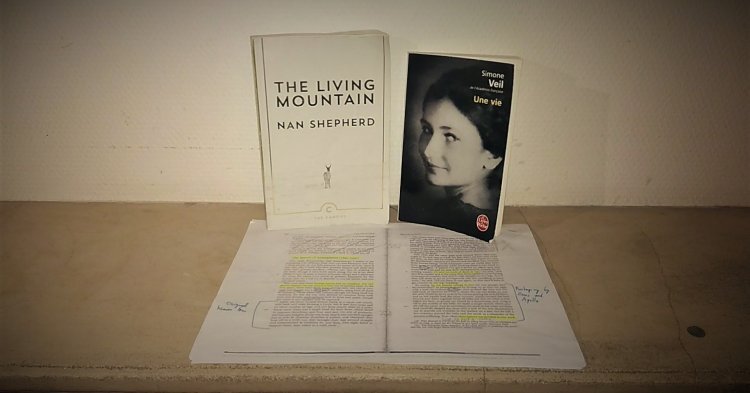The Speech of Aristophanes from Plato’s Symposium: discovering the origins of human love
In Plato’s Symposium, Aristophanes shares a myth which goes to the heart of the origins of human nature and human love. And, not gonna lie, this piece is a great source of inspiration for my own vision of love.
A long time ago, human nature was shaped such as two beings were sharing the same body. “Our ancient nature was not what is now (…) The form of each human being as a whole was round, with back and sides forming a circle, but it had four arms and an equal number of legs, and two faces exactly alike on a cylindrical neck”. But humans became arrogant and threatening towards the gods, so to punish them, Zeus cut them in two and asked Apollo to heal their wounds, giving humans the individual shape they still have now.
Our nature became thus divided in two, and each half was desperately trying to reunite with the other. “Now when their nature was divided in two, each half in longing rushed to the other half of itself and they threw their arms around each other and intertwined them, desiring to grow together into one, dying of hunger and inactivity too because they were unwilling to do anything apart from one another.”
Zeus took pity of us, and to allow us to reunite again with our lost half, he turned our pudenda to the front, and so caused us to reunite in each other, “undertaking to make one from two, and to heal human nature”. This is what making love is all about, literally reuniting with our lost half. Love (and the act of love) is here defined as the search for our lost half. When we meet our “own particular half”, we “are then marvellously struck by friendship and kinship and Eros, and scarcely willing to be separated from each other even for a little time”. Love is “what he desired all along, namely, to join and be fused with his beloved, to become one from two. The cause is that this was our ancient nature, and we were wholes.”
In conclusion, we would then “become happy, if we should fulfil our love and each meet with [our] own beloved, returning to [our] ancient nature”. It “leads us into what is properly our own”, it “will restore us to our ancient nature, and heal us, and make us blessed and happy”.
Another very important point of this text is that everyone, no matter their gender or sexuality, can identify to the story. Aristophanes indeed develops that the sectioned bodies were either men sectioned from men, women sectioned from women, men sectioned from women, or androgynous. Love thus goes beyond gender and sexual orientations, which probably shows that ancient Greeks were much more broad-minded than many current societies.
I would like to finish by some quotes in French, as I find them particularly beautiful and limpid on the origins of love:
“Voilà comment l’amour est si naturel à l’homme ; l’amour nous ramène à notre nature primitive et, de deux êtres n’en faisant qu’un, rétablit en quelque sorte la nature humaine dans son ancienne perfection.”
“(…) ce qui était de tout temps au fond de son âme : le désir d’un mélange si parfait avec la personne aimée qu’on ne soit plus qu’un avec elle. La cause en est que notre nature primitive était une, et que nous étions autrefois un tout parfait ; le désir et la poursuite de cette unité s’appelle amour.”
“Je suis certain que nous serons tous heureux, hommes et femmes, si l’amour donne à chacun de nous sa véritable moitié et le ramène à l’unité primitive. Cette unité étant l’état le meilleur, on ne peut nier que l’état qui en approche le plus ne soit aussi le meilleur en ce monde, et cet état, c’est la rencontre et la possession d’un être selon, son cœur.”
This review was based on R.E. Allen’s English translation and on Victor Cousin’s French translation of the Speech of Aristophanes.
Une Vie by Simone Veil: the inspiring life of an admirable woman
Simone Veil’s life was undoubtedly extremely rich, both personally, humanely, historically and politically. Une Vie is the autobiography she wrote in 2007, and goes through her undeniably impressive life and thought. Une Vie takes the reader through no less than 70 years of French and European history, through the journey of Simone Veil, the most striking parts being her dramatic experience of Shoah (The Hell), her fight for the right to abortion when she was French Minister of Health, and her European experience as the first elected President of the European Parliament (Citizen of Europe). One cannot deny Simone Veil’s strong European commitment and convictions, and her wish for a federal Europe after reading this chapter.
I could not say which part impressed me the most. As a federalist, I am obviously impressed by her European experience and thinking. As a woman, I am deeply moved by her fight for women rights, and in particular her fight for the right to abortion in France. As a French person and former student in Sciences Po, I am carried by all the historical and political events that happened in France and that she witnessed and contributed to. And of course, as a human being, how can one not be deeply shaken by the dramatic events of the Holocaust?
In any case, it should be noted that in everything she brings, Simone Veil writes in an incredible and impressive way: lucid, intelligent, sensible, critical, intimate and non-sectarian, I did not even suspect it was possible to write in such a complete, honest and open-hearted way. Stonewalling, subterfuges or misrepresentation were not in Madame Veil’s nature, whose integrity allowed her to fight for the causes she believed in and to express her opinions in a powerful and magnificent way.
Her analysis of French and European political life was sharp and of an impressive lucidity. I have to say that I ended up quite desperate as many observations and criticisms she made on the sclerosis of the French administrative and political system are still topical today, and she wrote her book ten years ago... Likewise, many of her concerns and warnings concerning both Europe and France were proven correct.
Finally, Une Vie is not only an autobiography, but also a novel, a history book and a political essay. I would go as far as saying that EVERY European, and especially each French person, should read this book. Whether one agrees with all Simone Veil’s statements or not, her analysis and mind should never be ignored and always considered.
The Living Mountain by Nan Shepherd: a sublime, sensual and philosophical journey in the Cairngorms
Nan Shepherd (1893-1981) was a Scottish woman who spent her life exploring the Cairngorms mountains, which are Great Britain’s largest national parc. In The Living Mountain, Nan Shepherd counts in a sublime way her journeys into the Cairngorms, not only by beautifully describing the landscapes, but also by going through a genuine sensual, emotional and philosophical journey. Altogether, the different chapters aim at going to the heart of the “essential nature” of the Cairngorms. Writing a review of this “masterpiece of nature writing” has actually something very frustrating in the sense that no commentary, no matter how long or precise, would be able to fully get one to understand the magnificence of this book.
“The Plateau”, “The Recesses”, “The Group”, “Water”, “Frost and Snow”, “Air and Light”, “Life: The Plants”, “Life: Birds, Animals, Insects”, “Life: Man”, “Sleep”, “The Senses” and “Being” are the twelve parts of the book, all the elements forming together the very essence and completeness of the mountain. Nan Shepherd insists several times on the interconnections and interdependence between the different parts. The mountain is only complete when the explorer (and the reader) embraces their intertwining.
Nan Shepherd tells the story in three main ways: one (beautifully) descriptive, one sensual (literally, by calling in the five senses to embrace the mountain’s integrity), and one philosophical. For the descriptive and sensual aspects, Nan Shepherd’s writing is so vivid, precise and beautiful that the readers, even if (like me) they have never been to the Cairngorms, can picture the play of colours and lights, the cold of the wind, the depth of the loch, the purity of water, the smell of the moss, the singing of the birds, the faces and voices of the gamekeepers… Landscapes can be pictured and senses can be apprehended in such an impressive way, that when the reader is fully engrossed in the pages, the limit between imagination and reality becomes more blurry. Nan Shepherds herself talks about a “reality of the mind”.
Likewise, Nan Shepherd’s philosophical journey through the Cairngorms is depicted in such an interesting and emotional way that in the end of the book, the temptation to pack your bag and go live the experience is highly tempting. The most interesting point is the evolution from the (very human) will to reach the summit, to “conquer” the mountain, from the will to embrace the completeness of the mountain, to understand its nature, by exploring, again and again, its recesses, and by calling in all five senses. This approach is the only way to embrace both the mountain’s integrity, but also your own. Her final philosophical achievement lies in the very last sentence of the book: “To know Being, this is the final grace accorded from the mountain”.
There is no doubt I will read The Living Mountain again, and I hope I will in the Cairngorms. After reading such a masterpiece, I look forward to seeing it with my own eyes... which is actually really reductive to say, regarding how deeply the author has experienced the mountain... So, I would rather say that I want to feel it with my own senses, mind and body. I want to see it, to breathe it, to hear it, to taste it, to touch it, to smell it, and to feel it, both physically and spiritually.
I would like to finish by quoting Robert Macfarlane, who summed up pretty well why Nan Shepherd’s writing is so striking and unique: “Most works of mountain literature are written by men, and most of them focus on the goal of the summit. Nan Shepherd’s aimless, sensual exploration of the Cairngorms is bracingly different.” In two sentences, a lot is said: she is a woman, her relationship with the mountain has spiritually evolved from the goal of the summit to the pleasure of exploration, and her experience is genuine and sensual.
Inspiring tributes by the Guardian: a review by Nicholas Lezard & “I walk therefore I am” and “How Nan Shepherd remade my vision of the Cairngorms” by Robert Macfarlane.


Follow the comments: |
|
